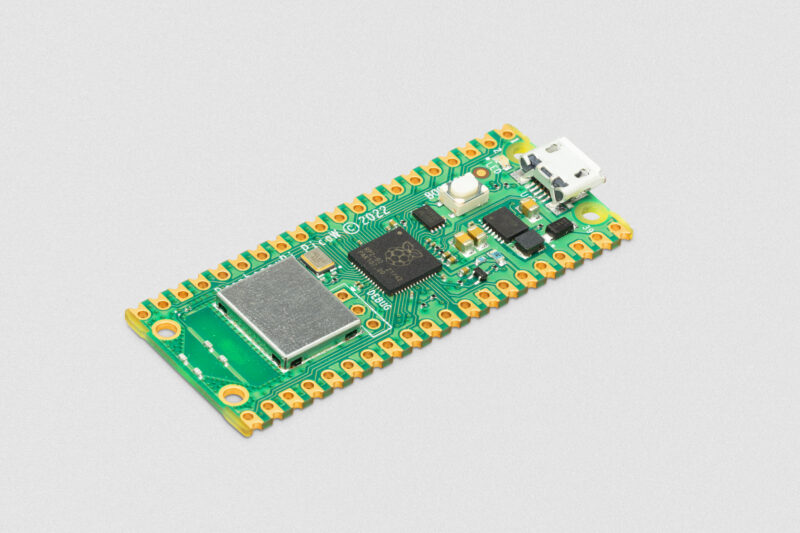As the owner of a RP2040 site and one that covers many products it obviously gives me great pleasure to see new products being launched and especially products from the Raspberry Pi foundation.
The latest board is the Raspberry Pi Pico W which adds wireless capabilities to the Raspberry Pi Pico range and the price is starting at a mere $6 for the board.

PICO-W
There are actually 3 slight variations and these are
Raspberry Pi Pico W brings 802.11n wireless networking
Pico H ($5) and Pico WH ($7) add pre-populated headers, and introduce a new 3-pin debug connector, to Pico and Pico W respectively.
The Raspberry Pi Pico W uses the same RP2040 microcontroller, here is a recap of the microcontroller features including the new features highlighted in bold
Features
- Dual-core Arm Cortex-M0+ processor, flexible clock running up to 133 MHz
- 264kB on-chip SRAM
- 2MB on-board QSPI flash
- 2.4GHz 802.11n wireless LAN (Raspberry Pi Pico W and WH only)
- 26 multifunction GPIO pins which include 3 analogue inputs
- 2 × UART, 2 × SPI controllers, 2 × I2C controllers, 16 × PWM channels
- 1 × USB 1.1 controller and PHY, with host and device support
- 8 × Programmable I/O state machines for custom peripheral support
- Supported input power 1.8–5.5V DC
- Operating temperature -20°C to +85°C (Raspberry Pi Pico and Pico H); -20°C to +70°C (Raspberry Pi Pico W and Pico WH)
- Castellated module allows soldering direct to carrier boards (Raspberry Pi Pico and Pico W only)
- Drag-and-drop programming using mass storage over USB
- Low-power sleep and dormant modes
- Accurate on-chip clock
- Temperature sensor
- Accelerated integer and floating-point libraries on-chip
The CYW43439 wireless chip from Infineon is used to supply the wireless lan functionality, interestingly the chip also says that it has bluetooth support which is not yet available in this board, lets hope they add that as well.
The SDK has already got support for wireless networking, other platforms may or may not work. There is also a uf2 image with networking support available
Now, in the UK these are in short supply often only available in quantities of 1 but I have a couple and we will be looking at the board in more detail in upcoming articles
Summary
The original Pico sold over 2 million units, now by adding wireless support you now have a true IoT platform with many add-on boards, great documentation and all for a low price.
This might be another game changer for makers
Links
UF2 image with networking support
Connecting to the internet PDF
